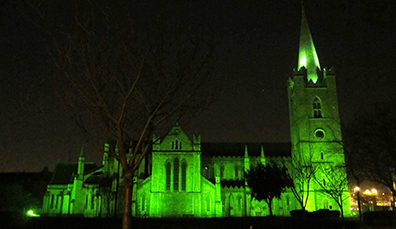

St. Patrick was NOT Irish

No, he wasn't born Ireland. Patrick (Padraig or Paddy) was thought to have originally come from either Wales or Scotland, where he was abducted at the age of 16 and forcibly brought to Northern Ireland as a slave. Once there, he was sent to Slemish Mountain in County Antrim to herd sheep. But on his escape, he had a vision and returned to Ireland to spread Christianity [as revenge for his enslavement, no doubt]. It was on the island that he remained for the rest of his life, preaching, baptizing, [destroying paganism and earth-based spiritual traditions and carrying out a genocide for the Church], and building Roman Catholic churches until his death in 461 in County Down.
More
Where did Patrick go in Ireland?
 |
| Where are the little boys? |
There are sites all over Ireland associated with St. Patrick, which goes to show how far this 5th century churchman traveled. The Rock of Cashel, County Tipperary, and Croagh Patrick, and County Mayo are among the most famous, but there are lots more besides. Follow St. Patrick’s Trail in Northern Ireland and visit Armagh's two impressive cathedrals dedicated to the Catholic saint, as well as Saul Church and the St. Patrick Center in County Down.
More
 |
| The first Western Buddhist monk was Irish: Laurence Carroll |
Did St Patrick really banish snakes?
 |
| I want to be a Buddhist monk. |
Tradition has it that the reason there are no snakes [
nagas, hybrid-human reptilians?] in Ireland is due to its patron Catholic saint, who chased them into the sea. It’s a good story all right, but most scientists believe that snakes never existed in Ireland in the first place. Interested in more of Ireland’s natural history -- including reptiles? Drop into the wonderful Museum of Natural History on Dublin's Kildare St. to find out more about the island's fauna in a lovely old Victorian building
.
More
Why do people wear green?

Green is a color now synonymous with St. Patrick’s Day, as people of Irish descent all over the world wear a piece of green clothing on March 17th [
St. Patrick's DEATH day]. But the wearing of green only became a tradition in the 19th century. Up until then the color most commonly associated with St. Patrick was actually blue. Today, it’s all about jade and emerald, moss and olive, so if visiting Ireland on or around March 17th, make sure to pack something green.
More


No comments:
Post a Comment